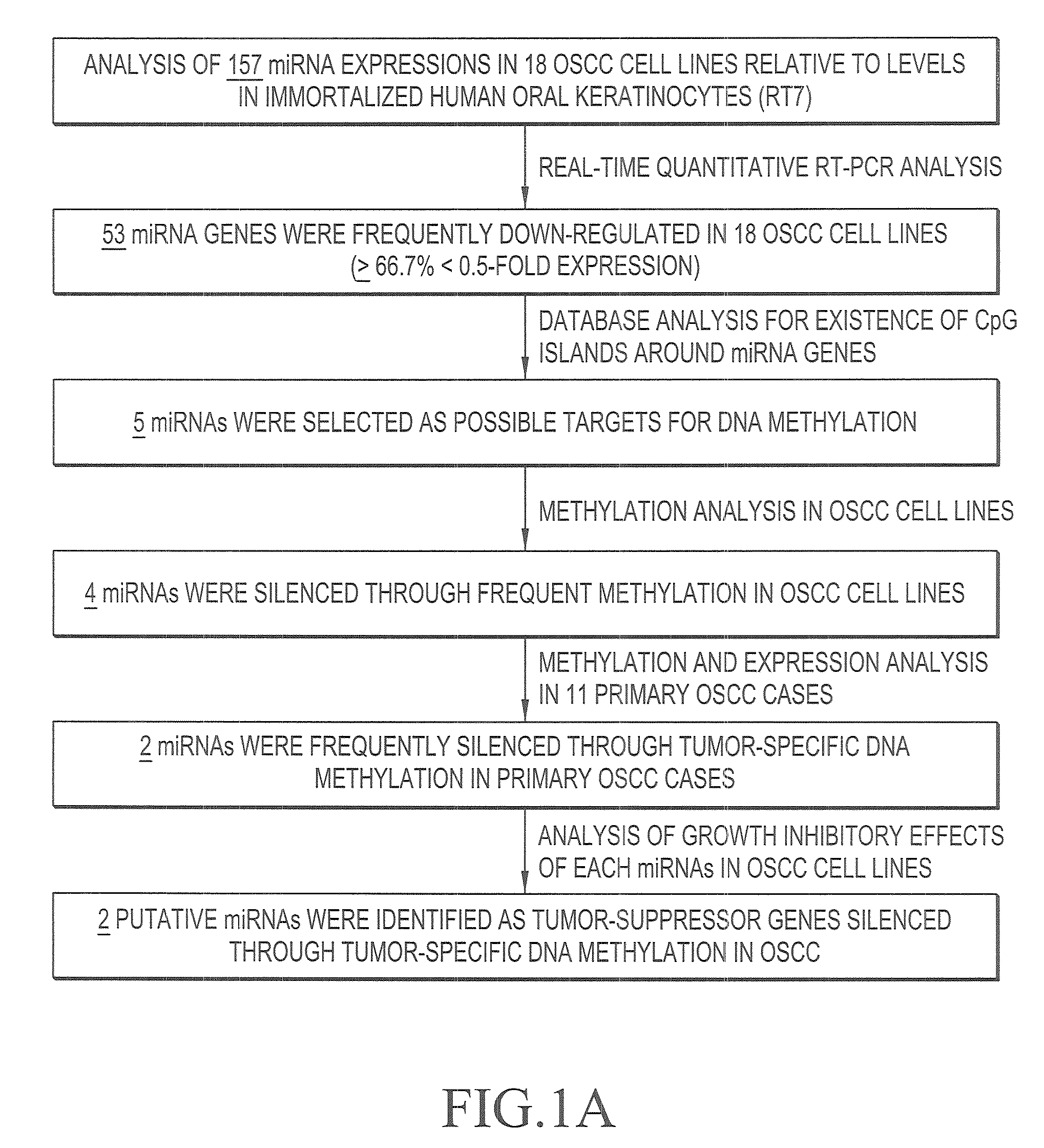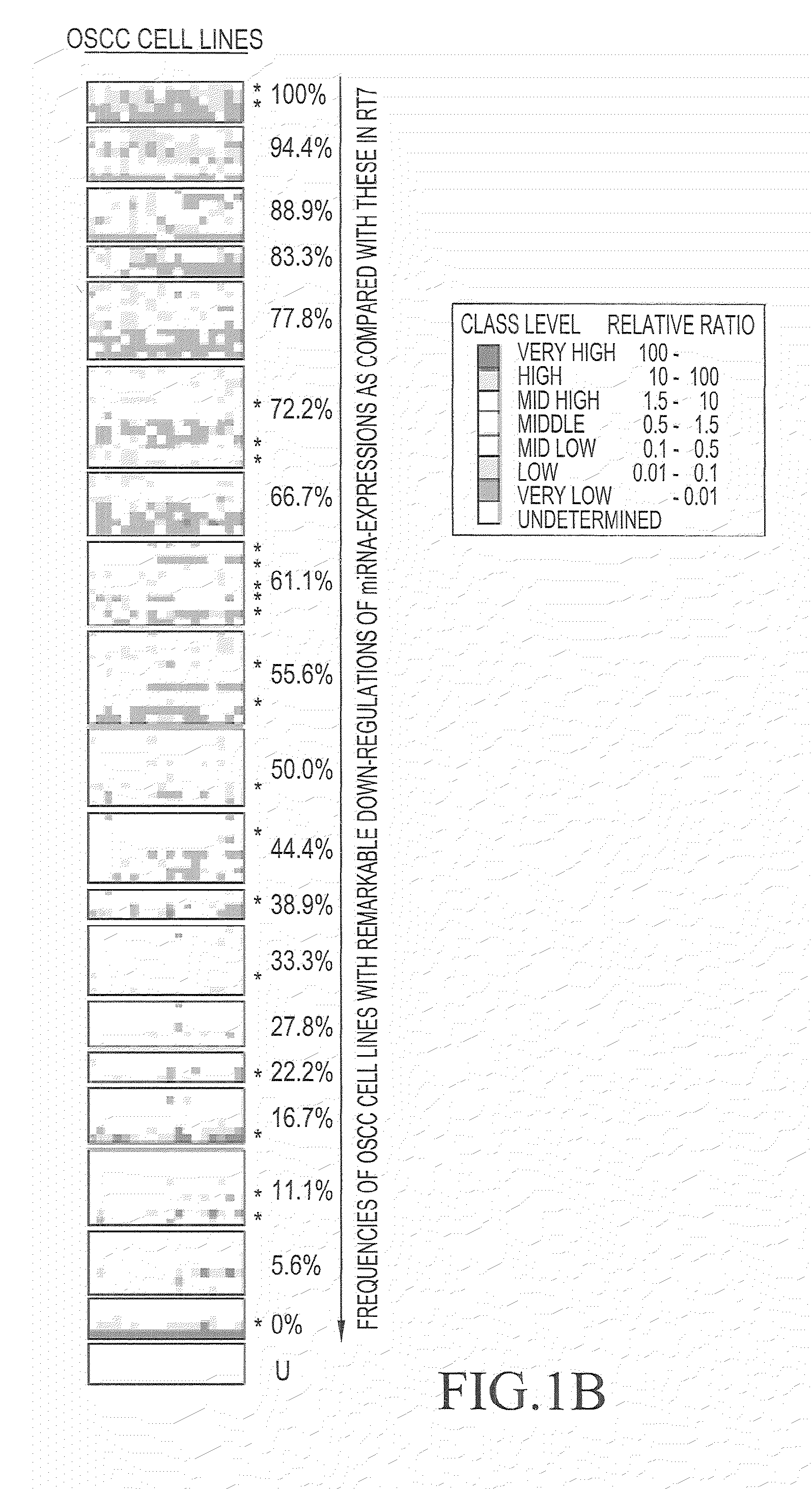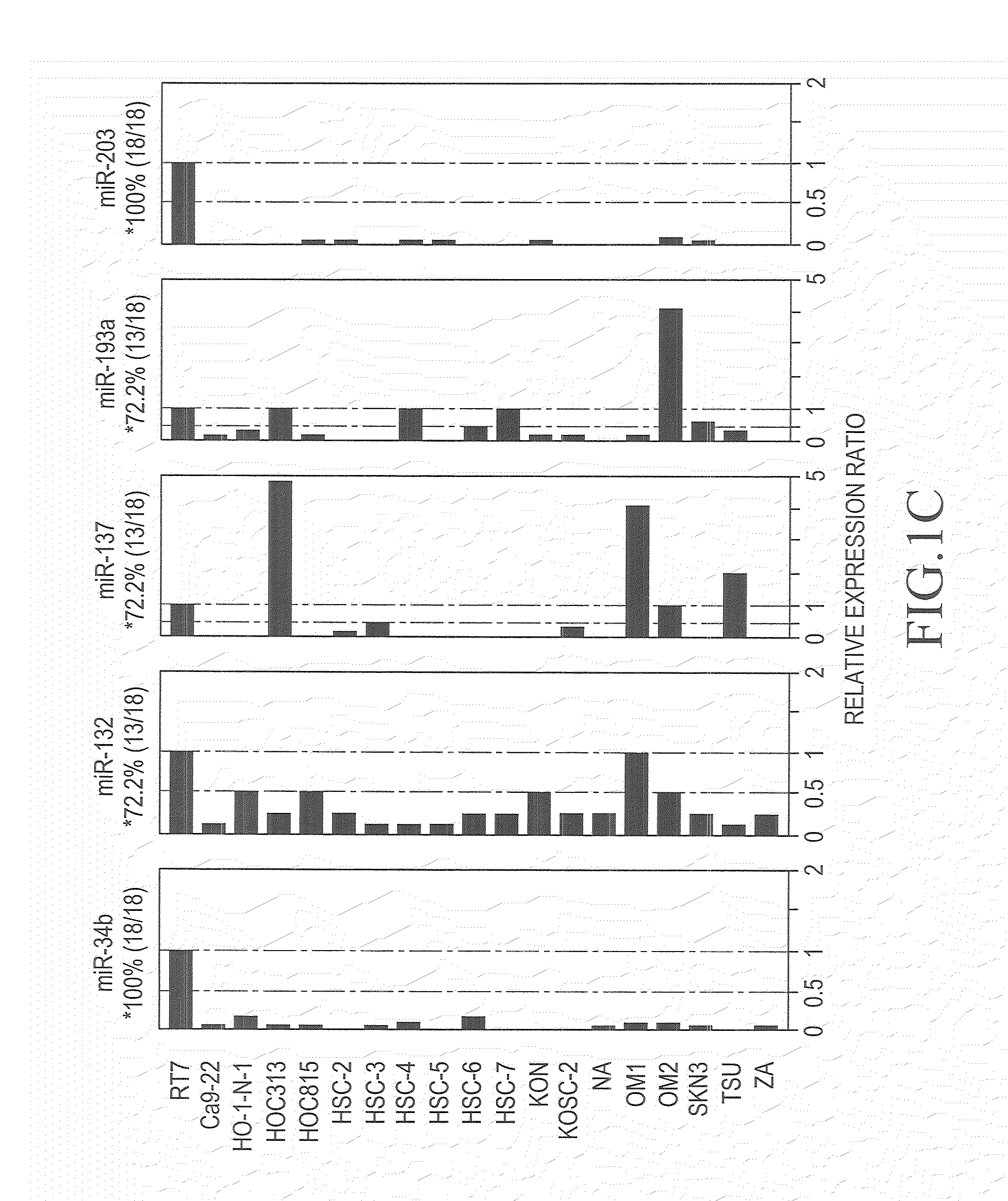Method for detecting carcinoma and agent for suppressing carcinoma
- Summary
- Abstract
- Description
- Claims
- Application Information
AI Technical Summary
Benefits of technology
Problems solved by technology
Method used
Image
Examples
example 1
Changes in miRNA Gene Expression in Oral Squamous-Cell Carcinoma
[0043]To detect changes in miRNA gene expression in oral squamous-cell carcinoma, 18 types of oral squamous-cell carcinoma cell lines (Ca9-22, HO-1-N-1, HSC-2, HSC-3, HSC-4, KOSC-2 c13-43, HOC-313, HOC-815, HSC-5, HSC-6, HSC-7, KON, NA, OM1, OM2, SKN3, TSU, and ZA) were used. As a control, a normal oral mucosal epithelium-derived immortalized cell line, RT7, was used. The oral squamous-cell carcinoma cell line was cultured in DMEM medium containing streptomycin (100 μg / ml), penicillin (100 units / ml), 2 mM glutamine, and 10% fetal bovine serum (FBS). The RT7 cell line was cultured using the KGM-2 Bullet Kit (Cambrex). Genomic DNA was extracted therefrom using the Genome DNA Purification kit (Gentra, Minneapolis, Minn.), and RNA was extracted using Isogen (Nippon Gene), in accordance with manufacturers' instructions.
[0044]FIG. 1A shows the strategy for isolating antioncogenic miRNA, the gene expression level of which has ...
example 2
Analysis of Candidate miRNA and Methylation in Oral Squamous-Cell Carcinoma Cell Lines
[0048]The human genome database (http: / / genome.ucsc.edu / ) was screened for the presence of CpG islands in the vicinities of 157 types of miRNA genes. As a result, 21 types of miRNA genes were found to be located on or around (within 1,000-bp) the CpG islands (Table 3).
TABLE 321 miRNAs located on / around CpG islandsmiRNALocusmiR-9miR-9-1, 1q22; miR-9-3, 15q26.1miR-9*miR-9-1, 1q22; miR-9-3, 15q26.1miR-34b11q23.1miR-92miR-92-1, 13q31.3; miR-92-2, Xq26.2; miR-92b, 1q22miR-124amiR-124a-1, 8p23.1; miR-124a-2, 8q12.3; miR-124a-3,20q13.33miR-1269q34.3miR-12714q32.31miR-129miR-129-1, 7q32.1; miR-129-2, 11p11.2miR-13217p13.3miR-1371p21.3miR-1492q37.3miR-15217q21.32miR-1899q22.32 (Replaced by miR-24-1)miR-1913p21.31miR-193a17q11.2miR-20314q32.33miR-21011p15.5miR-219miR-219-1, 6p21.32; miR-219-2, 9q34.11miR-3208p21.3miR-3397p22.3let-7i12q14.1
[0049]Among the 21 types of miRNA genes, the miR-34b, miR-132, miR-137...
example 3
Analysis of miRNA Expression and Methylation in Specimen from Patient with Oral Squamous-Cell Carcinoma
[0056]Whether or not methylation of four types of miRNA genes has occurred in cancerous tissue of a patient with oral squamous-cell carcinoma and the correlation between the state of DNA methylation of the four types of miRNA genes and the expression patterns in cancerous tissue of a patient with oral squamous-cell carcinoma were analyzed by using the COBRA method and TaqMan real-time RT-PCR analysis.
[0057]Regarding cancerous and noncancerous tissue samples of patients with oral squamous-cell carcinoma, 11 cases of frozen samples (T1: 0 cases; T2: 10 cases; T3: 0 cases; T4: 1 case) were obtained with the approval of the Ethics Committee of Tokyo Dental and Medical University, followed by acquisition of written agreements from patients with oral squamous-cell carcinoma who had undergone surgery at the Tokyo Dental and Medical University Hospital, Faculty of Dentistry. The relevant s...
PUM
| Property | Measurement | Unit |
|---|---|---|
| Level | aaaaa | aaaaa |
Abstract
Description
Claims
Application Information
 Login to View More
Login to View More - R&D
- Intellectual Property
- Life Sciences
- Materials
- Tech Scout
- Unparalleled Data Quality
- Higher Quality Content
- 60% Fewer Hallucinations
Browse by: Latest US Patents, China's latest patents, Technical Efficacy Thesaurus, Application Domain, Technology Topic, Popular Technical Reports.
© 2025 PatSnap. All rights reserved.Legal|Privacy policy|Modern Slavery Act Transparency Statement|Sitemap|About US| Contact US: help@patsnap.com



